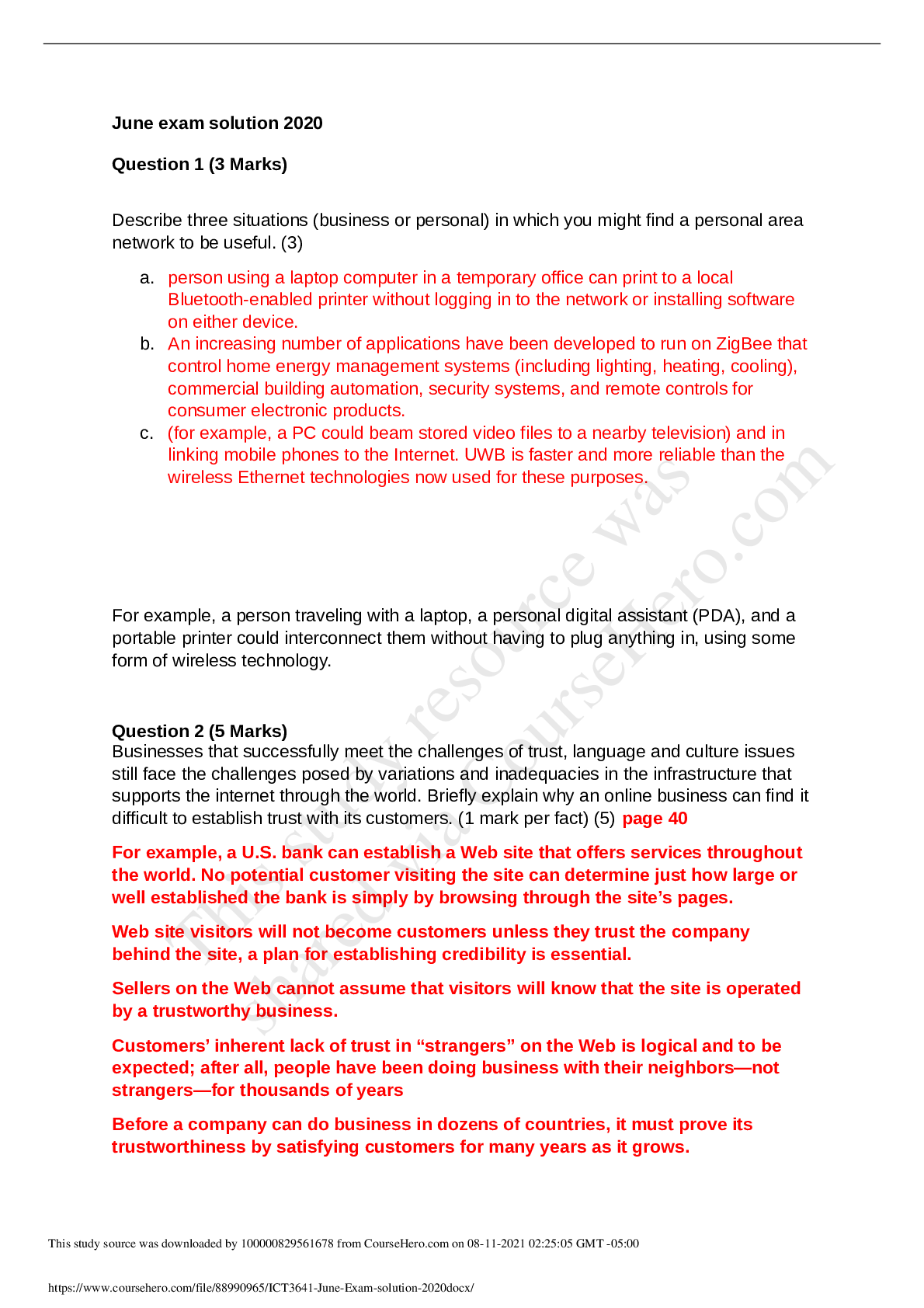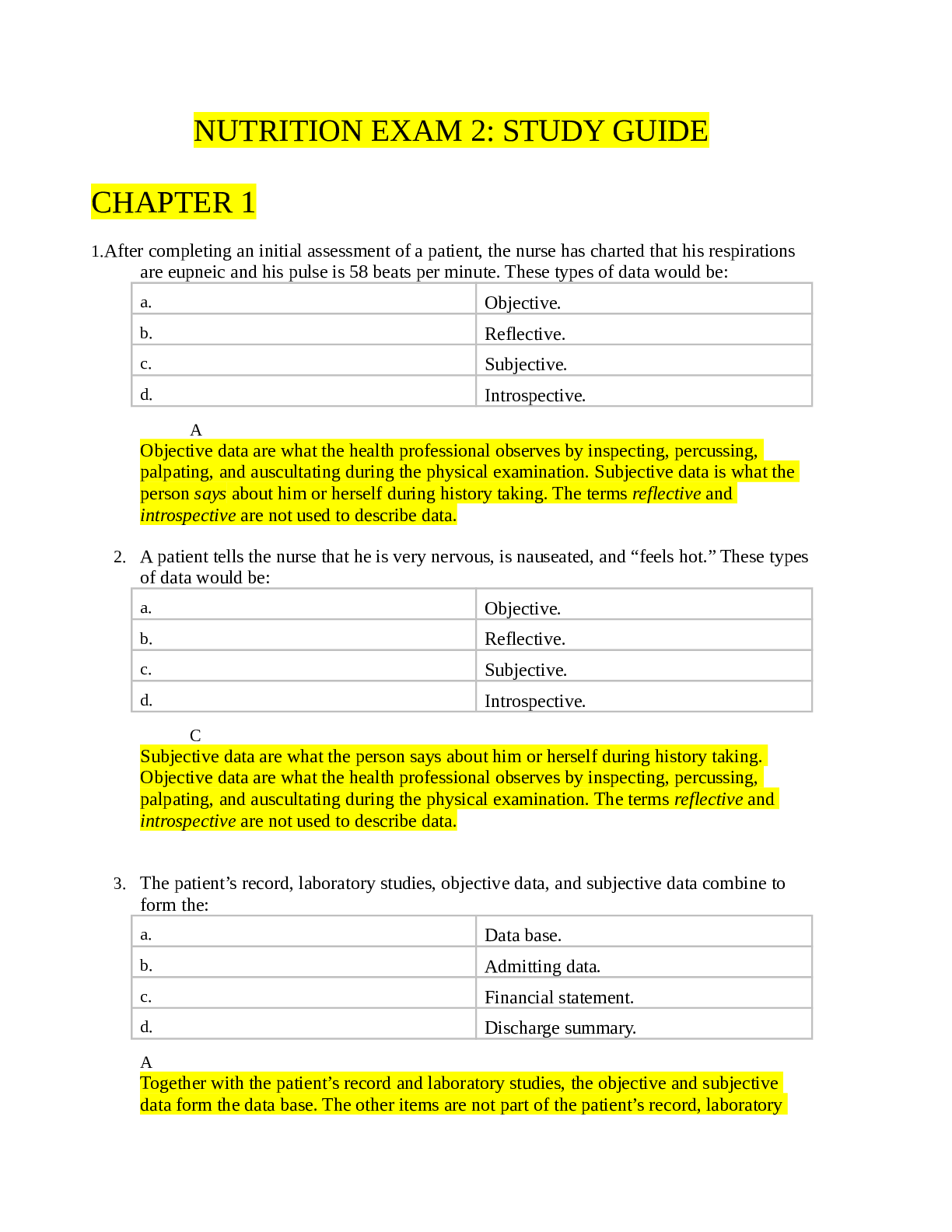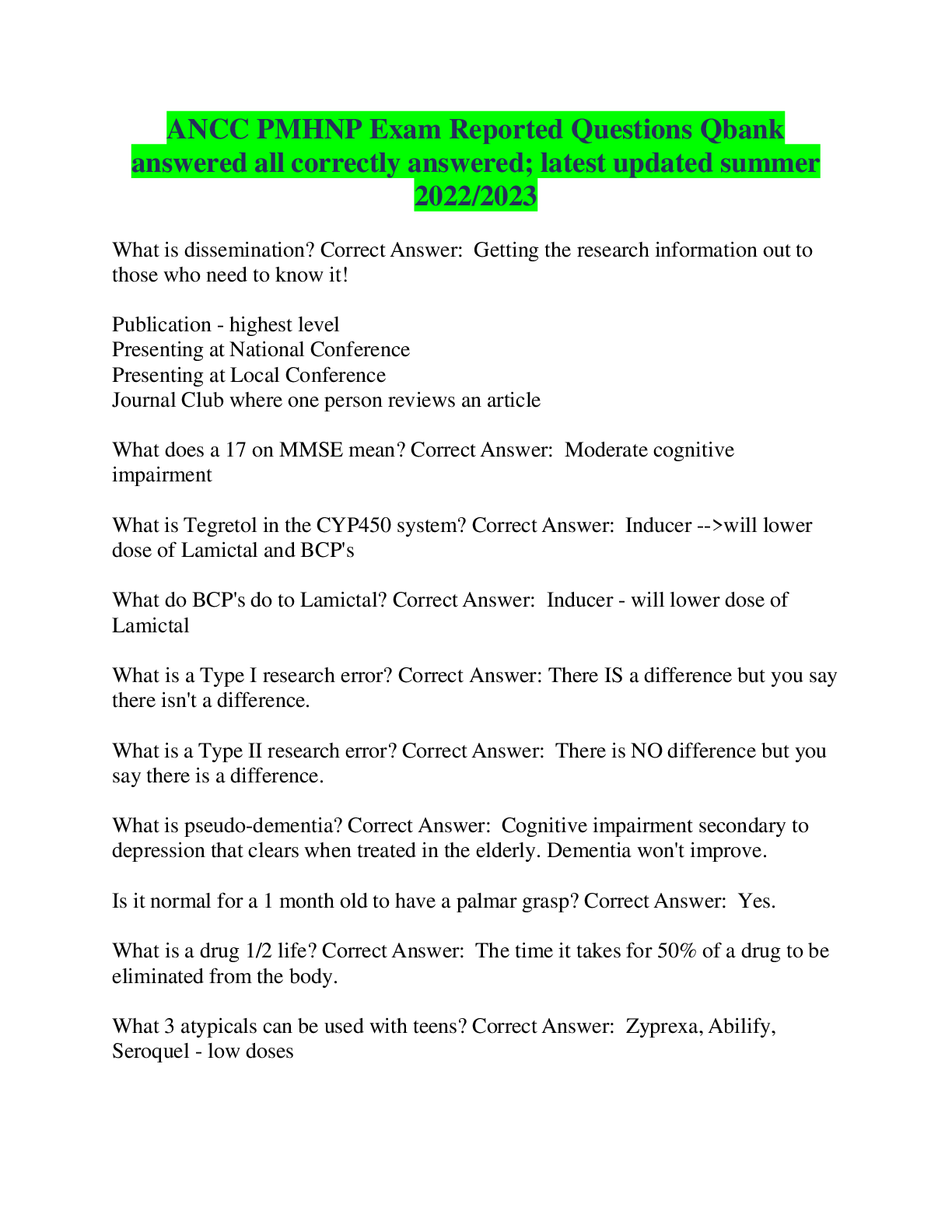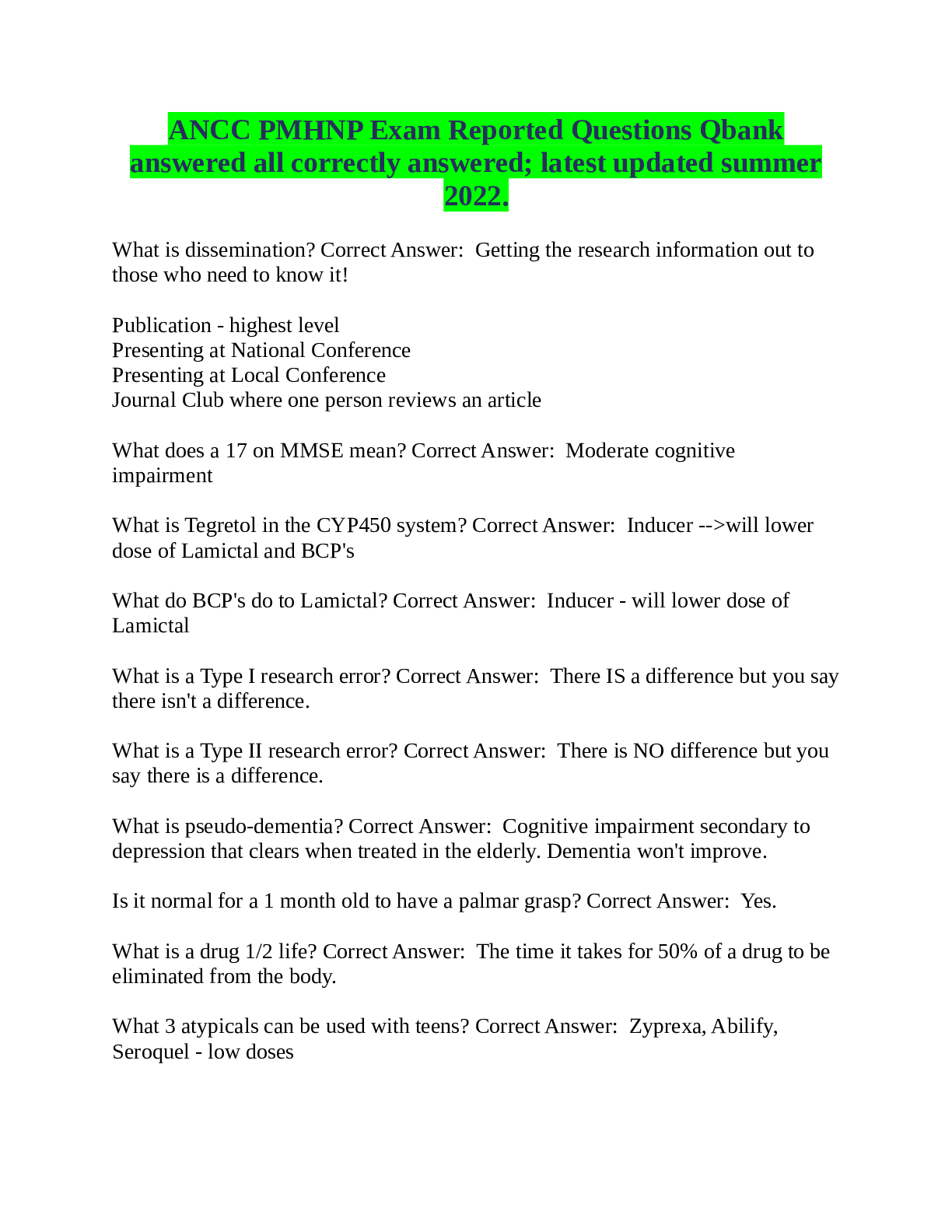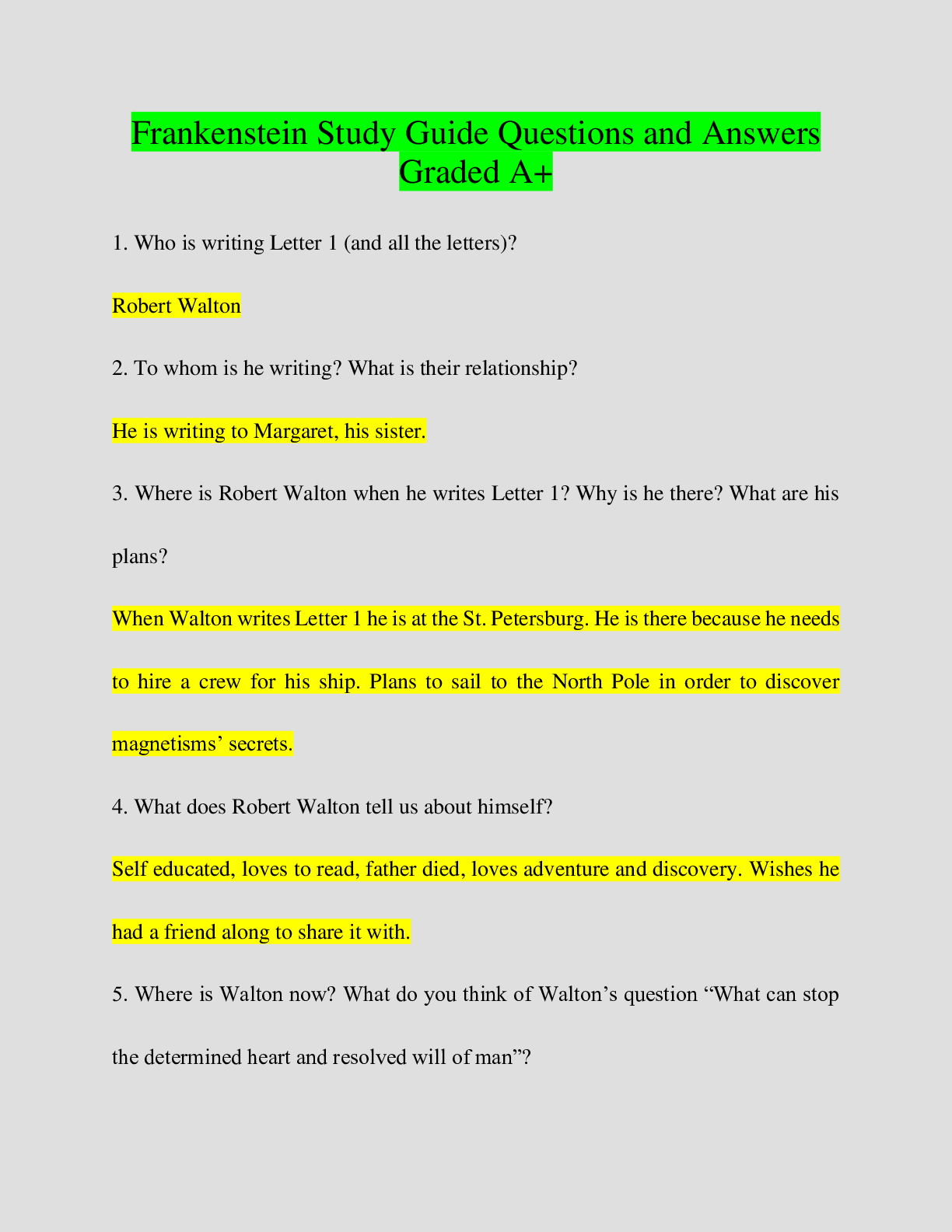*NURSING > EXAM REVIEW > Chapter 12:Health Assessment Exam 2: Study Guide Questions All correctly Answered and with Explanati (All)
Chapter 12:Health Assessment Exam 2: Study Guide Questions All correctly Answered and with Explanations.
Document Content and Description Below
1. The nurse educator is preparing an education module for the nursing staff on the epidermal layer of skin. Which of these statements would be included in the module? The epidermis is: a. Highly v... ascular. b. Thick and tough. c. Thin and nonstratified. d. Replaced every 4 weeks. D The epidermis is thin yet tough, replaced every 4 weeks, avascular, and stratified into several zones. 2. The nurse educator is preparing an education module for the nursing staff on the dermis layer of skin. Which of these statements would be included in the module? The dermis: a. Contains mostly fat cells. b. Consists mostly of keratin. c. Is replaced every 4 weeks. d. Contains sensory receptors. D The dermis consists mostly of collagen, has resilient elastic tissue that allows the skin to stretch, and contains nerves, sensory receptors, blood vessels, and lymphatic vessels. It is not replaced every 4 weeks. 3. The nurse is examining a patient who tells the nurse, “I sure sweat a lot, especially on my face and feet but it doesn’t have an odor.” The nurse knows that this condition could be related to: a. Eccrine glands. b. Apocrine glands. c. Disorder of the stratum corneum. d. Disorder of the stratum germinativum. A The eccrine glands are coiled tubules that directly open onto the skin surface and produce a dilute saline solution called sweat. Apocrine glands are primarily located in the axillae, anogenital area, nipples, and naval area and mix with bacterial flora to produce the characteristic musky body odor. The patient’s statement is not related to disorders of the stratum corneum or the stratum germinativum. 4. A newborn infant is in the clinic for a well-baby checkup. The nurse observes the infant for the possibility of fluid loss because of which of these factors? a. Subcutaneous fat deposits are high in the newborn. b. Sebaceous glands are overproductive in the newborn. c. The newborn’s skin is more permeable than that of the adult. d. The amount of vernix caseosa dramatically rises in the newborn. C The newborn’s skin is thin, smooth, and elastic and is relatively more permeable than that of the adult; consequently, the infant is at greater risk for fluid loss. The subcutaneous layer in the infant is inefficient, not thick, and the sebaceous glands are present but decrease in size and production. Vernix caseosa is not produced after birth. 5. The nurse is bathing an 80-year-old man and notices that his skin is wrinkled, thin, lax, and dry. This finding would be related to which factor in the older adult? a. Increased vascularity of the skin b. Increased numbers of sweat and sebaceous glands c. An increase in elastin and a decrease in subcutaneous fat d. An increased loss of elastin and a decrease in subcutaneous fat D An accumulation of factors place the aging person at risk for skin disease and breakdown: the thinning of the skin, a decrease in vascularity and nutrients, the loss of protective cushioning of the subcutaneous layer, a lifetime of environmental trauma to skin, the social changes of aging, a increasingly sedentary lifestyle, and the chance of immobility. 6. During the aging process, the hair can look gray or white and begin to feel thin and fine. The nurse knows that this occurs because of a decrease in the number of functioning: a. Metrocytes. b. Fungacytes. c. Phagocytes. d. Melanocytes. D In the aging hair matrix, the number of functioning melanocytes decreases; as a result, the hair looks gray or white and feels thin and fine. The other options are not correct. 7. During an examination, the nurse finds that a patient has excessive dryness of the skin. The best term to describe this condition is: a. Xerosis. b. Pruritus. c. Alopecia. d. Seborrhea. A Xerosis is the term used to describe skin that is excessively dry. Pruritus refers to itching, alopecia refers to hair loss, and seborrhea refers to oily skin. 8. A 22-year-old woman comes to the clinic because of severe sunburn and states, “I was out in the sun for just a couple of minutes.” The nurse begins a medication review with her, paying special attention to which medication class? a. Nonsteroidal antiinflammatory drugs for pain b. Tetracyclines for acne c. Proton pump inhibitors for heartburn d. Thyroid replacement hormone for hypothyroidism B Drugs that may increase sunlight sensitivity and give a burn response include sulfonamides, thiazide diuretics, oral hypoglycemic agents, and tetracycline. 9. A woman is leaving on a trip to Hawaii and has come in for a checkup. During the examination the nurse learns that she has diabetes and takes oral hypoglycemic agents. The patient needs to be concerned about which possible effect of her medications? a. Increased possibility of bruising b. Skin sensitivity as a result of exposure to salt water c. Lack of availability of glucose-monitoring supplies d. Importance of sunscreen and avoiding direct sunlight D Drugs that may increase sunlight sensitivity and give a burn response include sulfonamides, thiazide diuretics, oral hypoglycemic agents, and tetracycline. 10. A 13-year-old girl is interested in obtaining information about the cause of her acne. The nurse should share with her that acne: a. Is contagious. b. Has no known cause. c. Is caused by increased sebum production. d. Has been found to be related to poor hygiene. C Approximately 90% of males and 80% of females will develop acne; causes are increased sebum production and epithelial cells that do not desquamate normally. 11. A 75-year-old woman who has a history of diabetes and peripheral vascular disease has been trying to remove a corn on the bottom of her foot with a pair of scissors. The nurse will encourage her to stop trying to remove the corn with scissors because: a. The woman could be at increased risk for infection and lesions because of her chronic disease. b. With her diabetes, she has increased circulation to her foot, and it could cause severe bleeding. c. She is 75 years old and is unable to see; consequently, she places herself at greater risk for self-injury with the scissors. d. With her peripheral vascular disease, her range of motion is limited and she may not be able to reach the corn safely. A A personal history of diabetes and peripheral vascular disease increases a person’s risk for skin lesions in the feet or ankles. The patient needs to seek a professional for assistance with corn removal. 12. The nurse keeps in mind that a thorough skin assessment is extremely important because the skin holds information about a person’s: a. Support systems. b. Circulatory status. c. Socioeconomic status. d. Psychological wellness. B The skin holds information about the body’s circulation, nutritional status, and signs of systemic diseases, as well as topical data on the integumentary system itself. [Show More]
Last updated: 1 year ago
Preview 1 out of 17 pages

Reviews( 0 )
Document information
Connected school, study & course
About the document
Uploaded On
May 09, 2021
Number of pages
17
Written in
Additional information
This document has been written for:
Uploaded
May 09, 2021
Downloads
0
Views
63

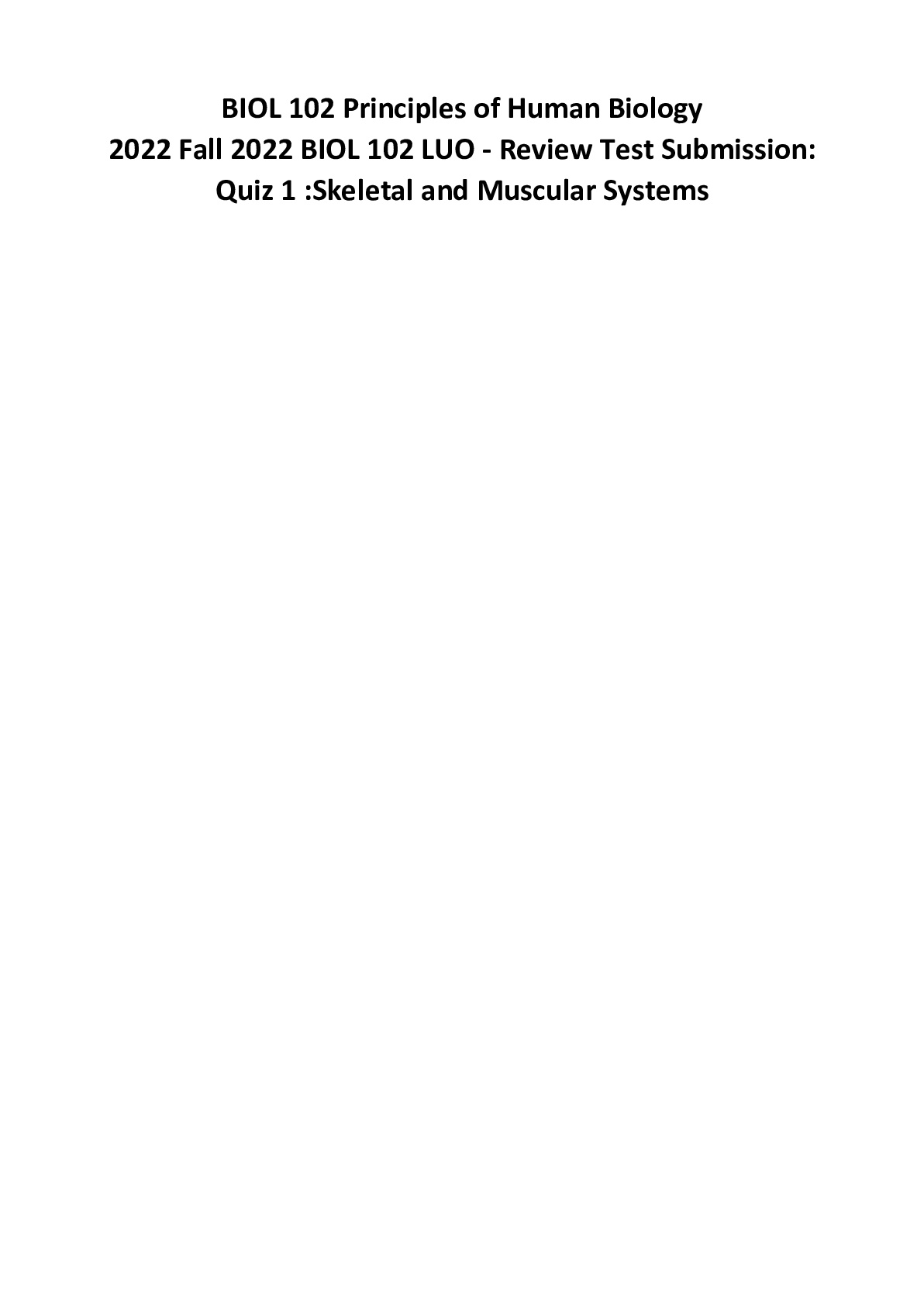
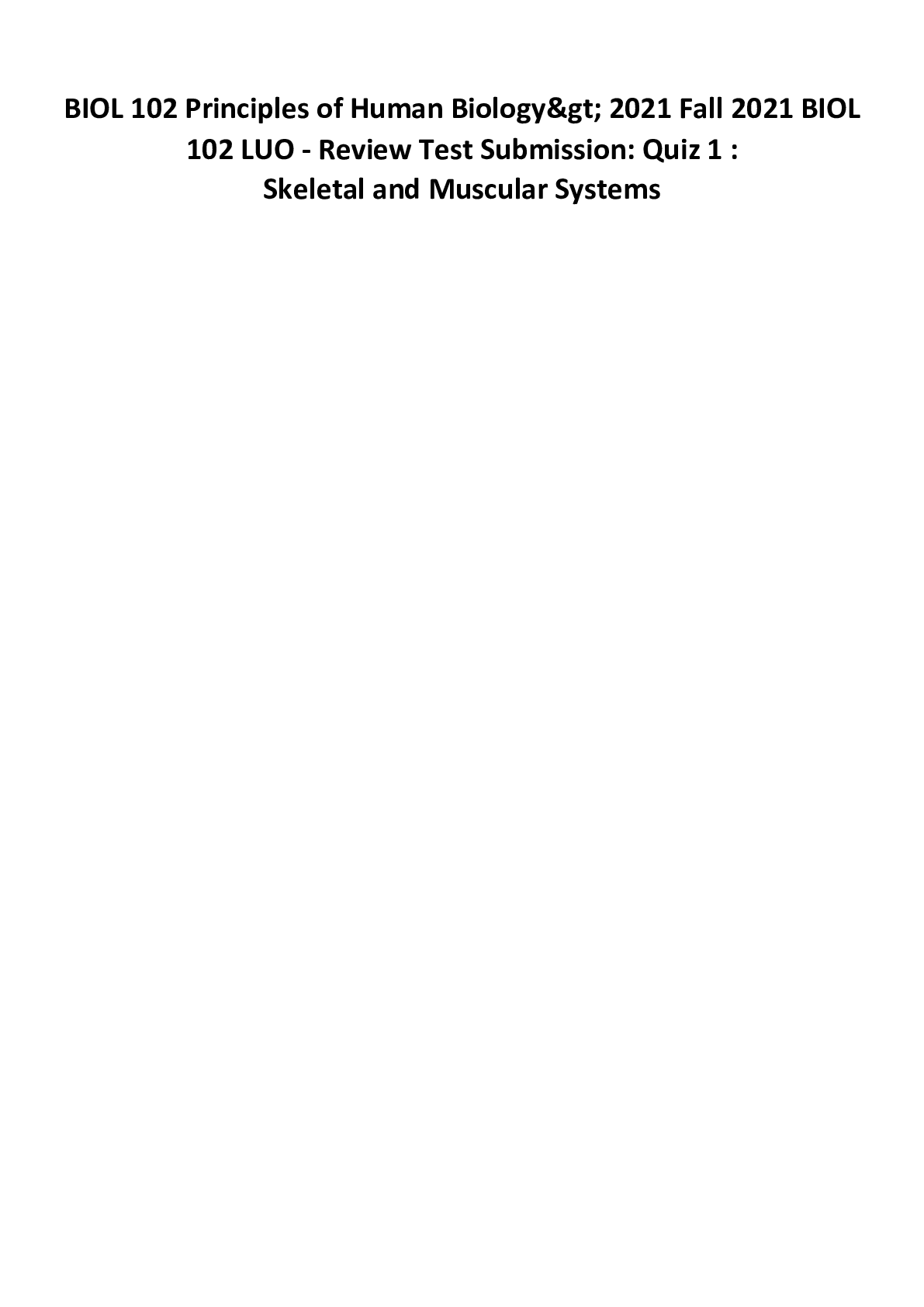
.png)

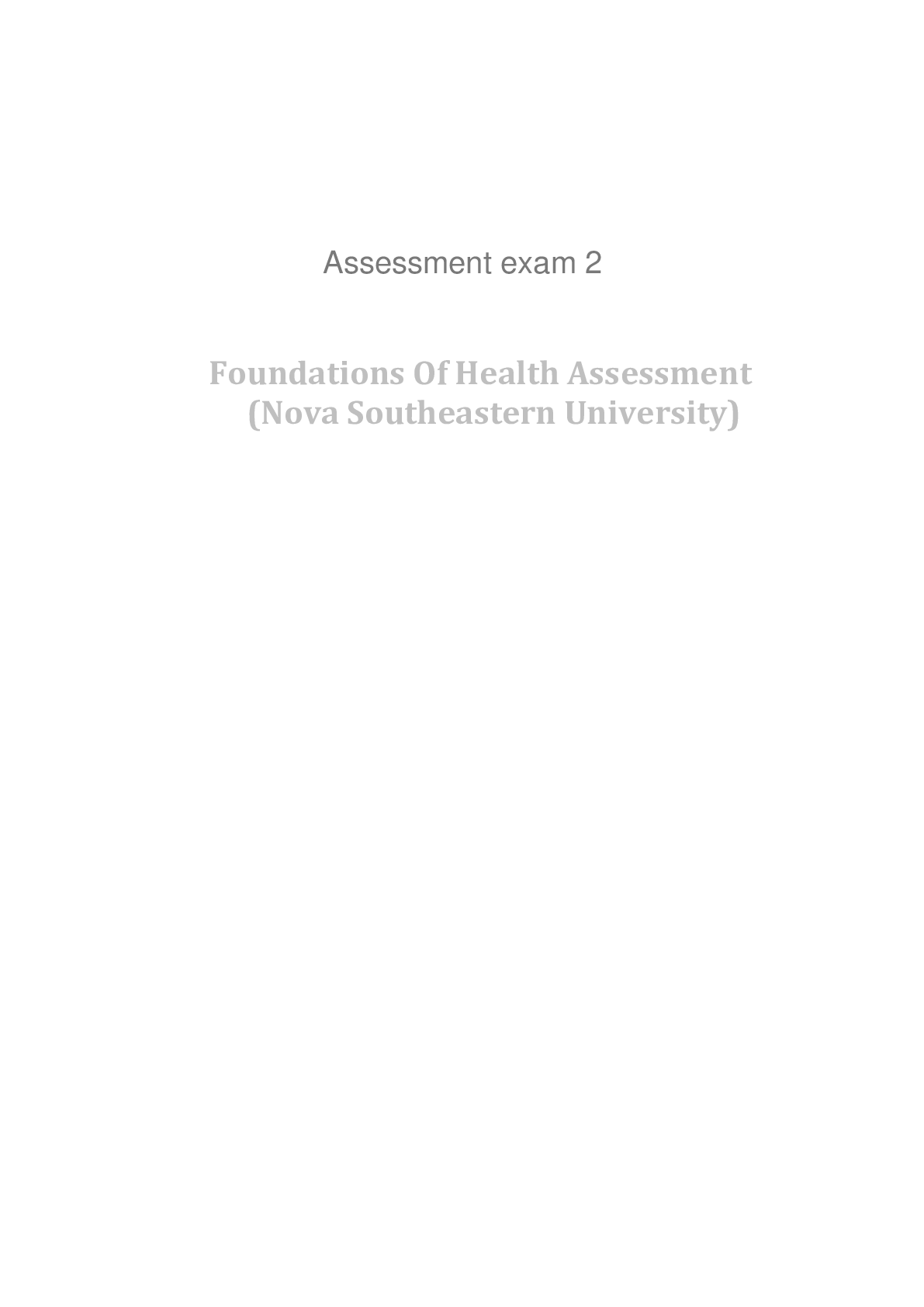
.png)
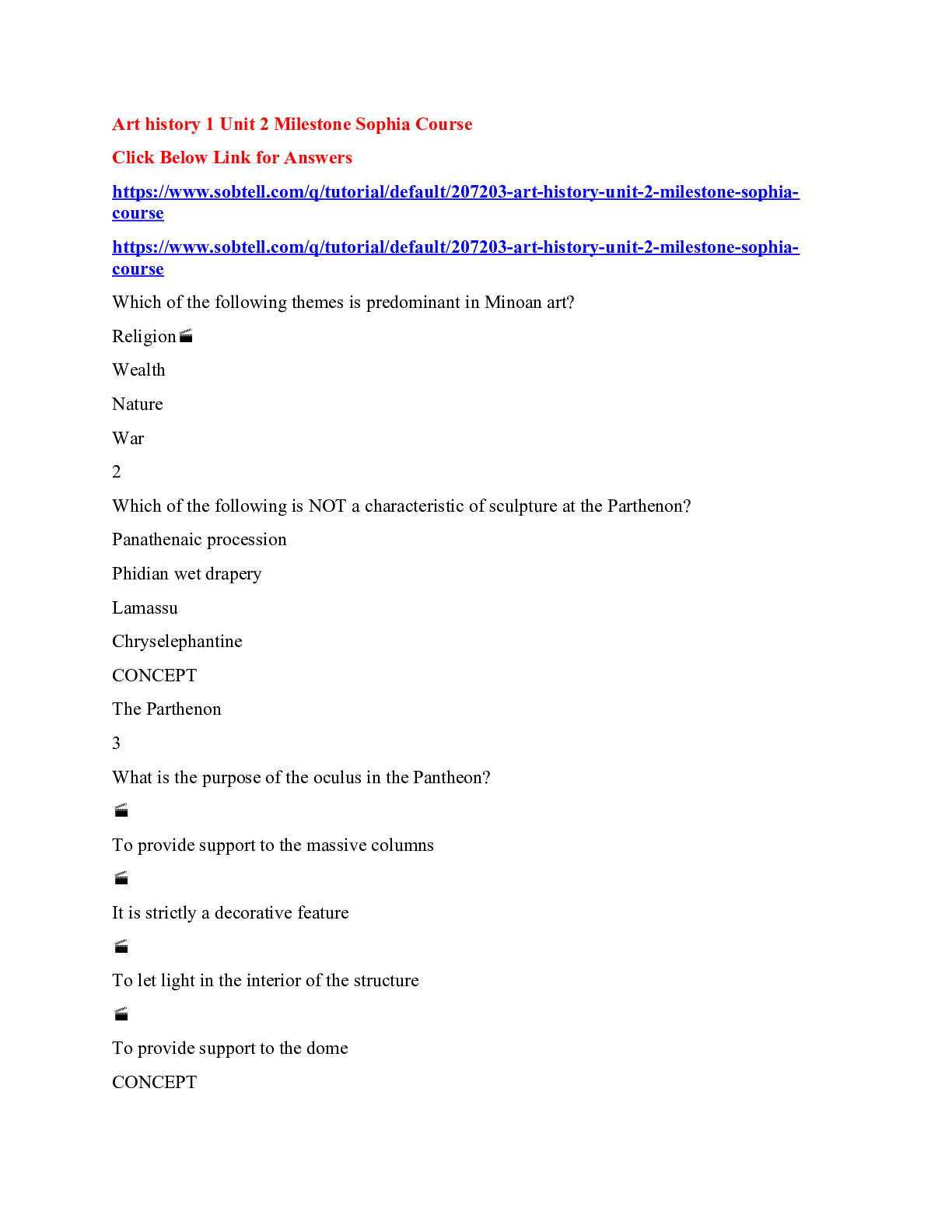




.png)
.png)


